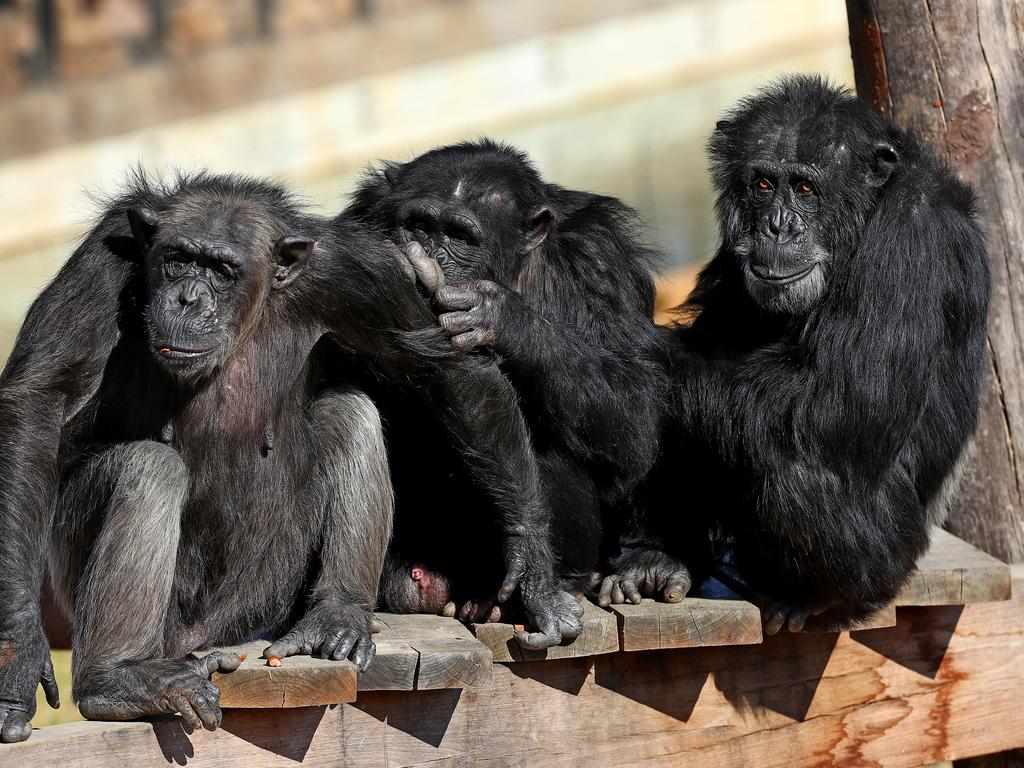Australian couple fights to save Port Moresby Nature Park, PNG’s only zoo
An Australian couple is battling to save PNG’s only nature park and its vulnerable species as coronavirus takes its toll.
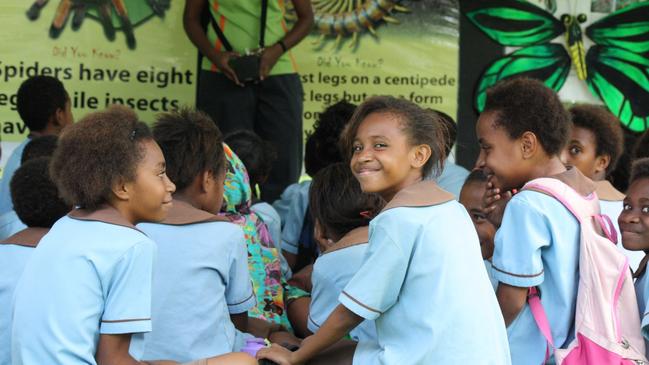
The little turtle looks as if it’s wearing a snorkel but its oddly shaped nose helps it to sense prey in muddy river beds in remote Papua New Guinea. A small child holds the pig-nosed turtle in her hands, lifts it over the edge of a boat and gently releases it into the water.
It’s a jubilant moment for the local people of Wau Creek Protected Area as dozens of these endangered turtles, called piku, are released into the wild near Kikori in the Western Province.
This rescue act for a turtle species is more remarkable considering that it has happened during the height of PNG’s coronavirus pandemic. Yet the virus is threatening to close the very institution that assisted the turtle’s survival.
Port Moresby Nature Park is the nation’s only zoo and represents the single most successful conservation story in the Indian-Pacific region. It was in a parlous state when Queensland couple Michelle McGeorge and her zoo curator husband Brett Smith, who had worked before in PNG, were invited by the governor of Port Moresby to come for a single year and “tidy it up”.
Ten years later, McGeorge and Smith are still there, now joined by their seven-year-old daughter Mila. They are proud of what has been achieved despite incredible odds in the park’s lush tropical 12ha next door to the university.
“A decade of my life has been dedicated to the people of Papua New Guinea and building with them something that they can be proud of,” McGeorge says.
The park cares for one of the world’s largest collections of PNG’s national bird emblem, the bird of paradise, with 30 birds representing nine species. Last year the park became the first zoo in the world to successfully breed one species, the magnificent riflebird.
The pig-nosed turtle project took five years, from airlifting batches of eggs to the park for safe hatching and five years later returning them to the wild as young adults. Wau Creek community leader Frank John, who helped co-ordinate the program, says nobody knew the turtles needed rescuing. “We hunted piku for its meat to eat and sell,” he says.
“We’ve been researching the breeding behaviour of species that nobody in the world has ever bred before,” McGeorge says. “That’s one of the amazing things about the park, that we have often world-first or country-first initiatives.”
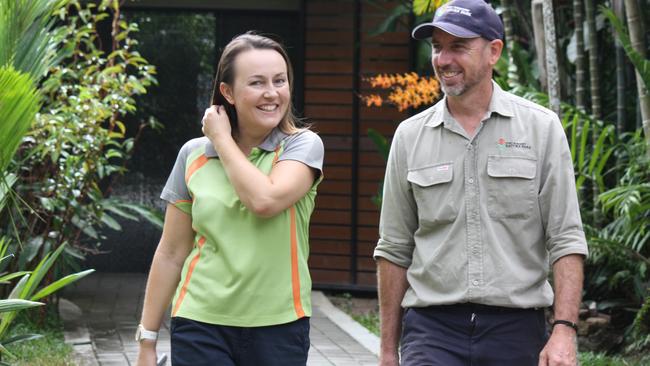
Originally a botanical garden, Port Moresby Nature Park houses more than 550 animals, of which nearly a quarter represent vulnerable and endangered native species. Many animals arrive at the park worse for wear.
“We have a combination of rescued animals that can’t be released because they were injured or they are not from this area,” McGeorge says. “You see the selling of wild animals by the roadside every day. It’s not regulated, and people think it may be good to have a parrot or a tree kangaroo as a pet. They discover it’s not easy or practical, so we offer to take animals they surrender to us. If we can’t release it, we’ll give it a home at the park.
“But we’re at the point where an animal will come to us for triage and we will have to make a decision whether we can afford to save that animal’s life.”
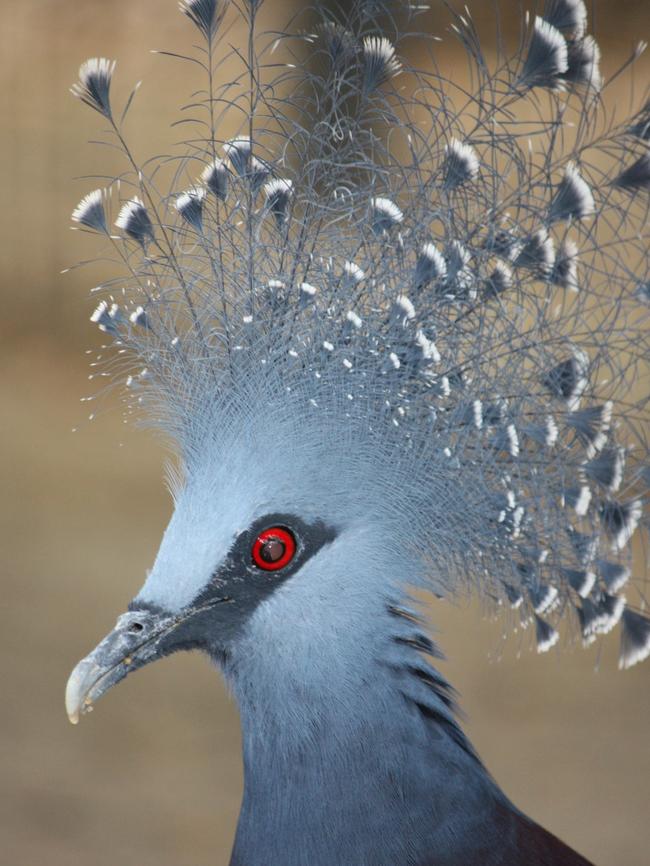
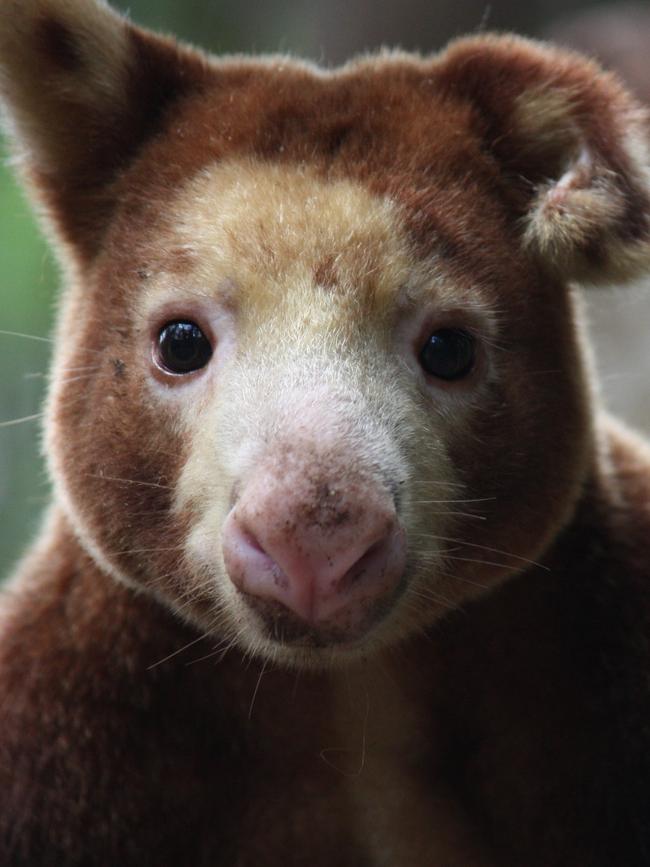
When COVID-19 hit PNG and a state of emergency was declared in April, the families who once paid a modest fee to gather under the park trees for picnics and constant streams of visiting school groups stopped, along with the zoo’s income.
“Our visitation dropped by 75 per cent, and in August it dropped again because we had a two-week lockdown,” McGeorge says. The general slowing of the PNG economy hasn’t helped; “our market is average-earning, middle class Papua New Guineans and their families, and they are feeling the pinch”.
Life in PNG has been eventful for McGeorge and her family, including attempted carjackings and assaults, and the hasty delivery of Mila without medical help. “But all of that pales when compared to the challenges and impact of COVID-19,” says McGeorge.
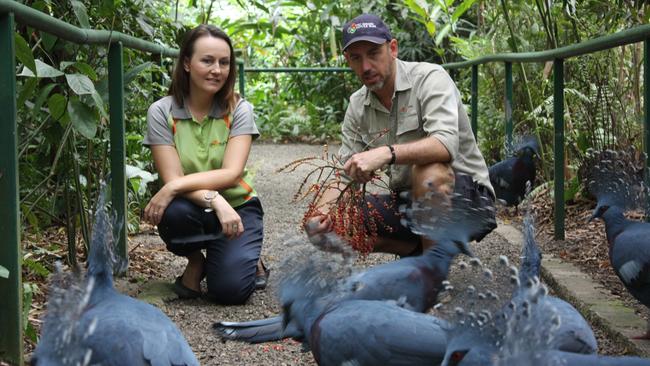
“This year has been a battle to save 10 years of hard work — not just mine, Brett’s or the staff’s, but to save something of importance for the entire country. To see it spend months on the brink of financial collapse has been the hardest and longest challenge yet.” Zoos and aquariums worldwide are the overlooked victims of COVID-19, starved of visitors and core income as gates shut tight. Yet behind the fences, no zoo can go into hibernation or save costs on animals needing to be fed daily and kept alive in costly enclosures that often require heating or running water.
Even well-funded European zoos have sounded the alarm about prolonged financial stress, lonely unvisited animals and a halt to critical scientific work. Germany’s Neumunster Zoo even admitted it had drawn up a list of animals that might have to be fed to others if the zoo’s very survival was at stake. In PNG, as the pandemic put pressure on poor communities, security became a bigger issue than usual. “It was pretty rough at the beginning to work out if there would be civil unrest and people breaking into the park,” says McGeorge. Meanwhile, more than 500 animals still needed to be fed, kept warm and watered. Breeding programs had to be maintained for rare birds, tree kangaroos and a suite of endangered frogs.
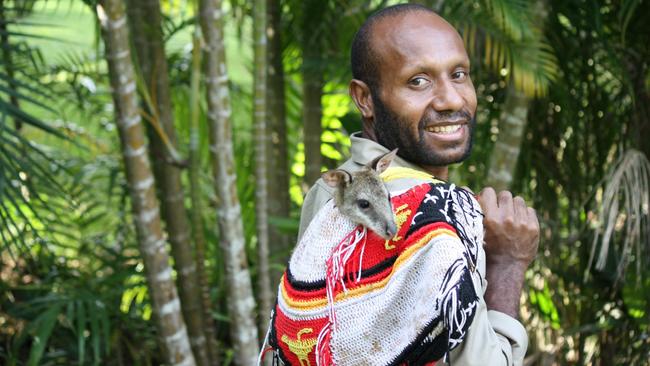
“The tenacity of Michelle and her committed staff is remarkable,” says Cameron Kerr, president of the Zoo and Aquarium Association of Australasia and chief executive of Taronga Conservation Society Australia. “She’s a sharp thinker who has got the spirit of a lion.”
Kerr says the Zoo and Aquarium Association successfully lobbied on behalf of 120 Australasian animal parks and zoos suffering financial duress because of the pandemic. It resulted in the federal government making $94.6m available to support the costs of wildlife care, and zoo staff are eligible for JobKeeper payments.
No equivalent help exists for Port Moresby’s zoo. Yet in 2018 it became the first Pacific Island facility to receive the Zoo and Aquarium Association’s highest international welfare accreditation.
“To pass one of the hardest welfare exams ever was remarkable for a developing country and made us really proud of our staff,” says McGeorge. But keeping standards high is tough at a time when even the zoo’s staff are in need of rescue.
The park normally operates with 75 staff; it is down to 63, but when COVID-19 cases spiked staff members were moved into the zoo grounds, housed and fed to minimise the risk of infection. It means that on top of animal costs, money is also needed for human needs. Only three zoo staff members are non-Papuan — McGeorge, Smith and one other Australian.
“We invest a lot in our staff because we’re the only organisation of its kind in the country and we don’t have expertise elsewhere to draw on,” McGeorge says.
Zoos Victoria is a sister institution that has provided training and exchange for 60 PNG park staff in recent years. “But all that’s been put on hold,” McGeorge says. “The wildlife is our priority and we want to ensure their feeding is not compromised.” The country’s tourism authority is lending a hand, and one-third of the park’s budget is funded by the National Capital District Commission. “But the other two-thirds we have to generate through visitation,” she says. The park has reached out to Moresby’s business community “but they’ve been doing it tough too and there’s fear of uncertainty about another COVID surge.”
A GoFundMe page was launched in June and has attracted $280,000 out of a target of $440,000. But even if that target is met, it would only cover 10 months of the park’s operational costs.
“People forget that zoos can’t just send everyone home, we have to keep working because our animals rely on us for our care,” Zoos Victoria chief executive Jenny Gray says. “We’ve all had our revenue slashed here in Australia, and in Victoria our zoos remain closed, but Port Moresby is left without government support.”
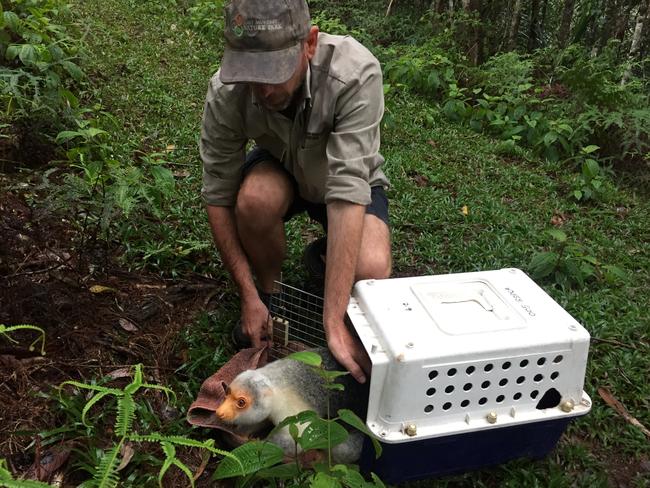
Closure could have a devastating ripple effect, not least to local businesses and growers who are selected to supply the park rather than Port Moresby’s big supermarkets. Conservation would be the biggest loser in a nation with the world’s third largest rainforest and nearly 8 per cent of all the world’s species. Many locals are unaware of their country’s extraordinary biodiversity, McGeorge says. “Given the relatively low levels of education, some local people don’t understand quite how unique it is or the fragility of the natural environment.”
The park attracts 24,000 schoolchildren a year for on-site visits, and offers the only structured excursion program in the nation. The education work is crucial, says the Zoo Association’s Kerr. “Like any visit to Taronga or Melbourne zoos, children in PNG develop their own memories of visiting and valuing their own local species,” he says. “The children appear to be very engaged and they grow up wanting to protect their wildlife, not just see it as a commodity to be eaten or sold.”
For some children, the park offers their first opportunity to see living native wildlife. At the Mount Hagen Show, dancers wear spectacular costumes made from the feathers, wings and body parts of a dozen endangered birds or mammals. One woman McGeorge photographed had endangered tree kangaroo fur around her neck and feather ornaments from 21 different bird species.
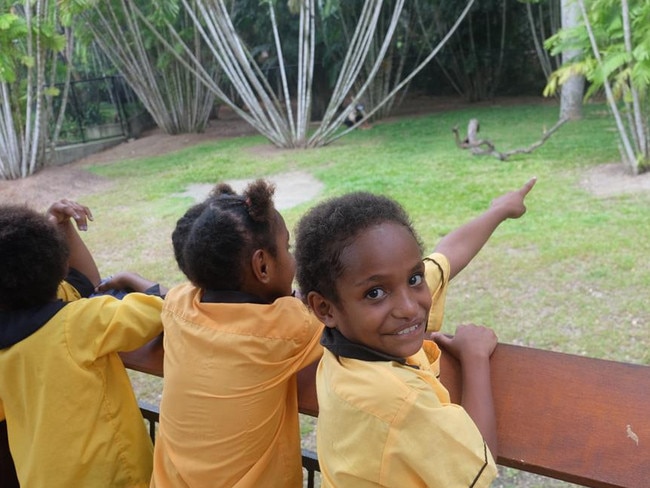
Financial pressure could see Port Moresby Nature Park curtail its role as the only place in PNG that rescues animals from cruelty and the illegal wildlife trade.
“Without it, many animals will suffer and die. The worst outcome would be if our animals have to be released into the wild and face an uncertain future, or be euthanised,” McGeorge says.
“We have flown in rescued animals from other areas, particularly endangered species that can become part of our breeding program. We commonly get cuscus, tree kangaroos, a lot of snakes and parrots because poachers will take baby birds and try to sell them in the markets. Wallabies are hunted for meat and hunters who find young in the pouch of dead mothers bring them to the zoo. We’ve rescued cassowaries that were living in terrible conditions.”
McGeorge, whose background is in not-for-profit strategic development of zoos, says she will not give up. “Pre-COVID the park was doing well, and now we just have to get through this period. Everything is now focused on making sure we have the food and the staff, and can pay the electricity bills because a lot of our animals depend on pumps and water.”
In recent weeks, school groups have started returning to the park for education outings. “The GoFundMe campaign is a big part of that,” she says gratefully. “Our education team is happy to finally have children back, and the kids are excited to be learning.” Many local children can’t access remote or distance education so school closure meant no learning.
Gray says McGeorge and her team deserve all the help they can get. “Without a place like that in PNG to come and fall in love with animals, it makes the future seem fragile. This is a place that needs our support.”


